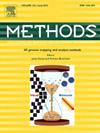Optimization of 13C stable isotope labeling for the study of tricarboxylic cycle intermediates in mouse models
IF 4.3
3区 生物学
Q1 BIOCHEMICAL RESEARCH METHODS
引用次数: 0
Abstract
The tricarboxylic acid cycle (TCA), also known as the Krebs Cycle or the citric acid cycle, is an essential metabolic pathway involved in energy production that is often impacted by disease, making it of key interest to identify effective, affordable, and simple ways to monitor the impact of disease on TCA metabolism. 13C-based stable isotope labeling is a useful technique to track pathway alterations in living hosts. However, infusion-based methodologies are slow and expensive despite achieving steady-state labeling. Bolus-based methods are cheaper, faster, and compatible with biohazardous models, but require optimization to achieve maximum labeling. Herein, we performed bolus-based stable isotope labeling experiments in mouse models to identify the optimal dosage amount, label administration length, fast length prior to label administration, 13C-labeled precursor, and route of administration for the TCA cycle in the esophagus, heart, kidney, liver, plasma, and proximal colon. 13C-glucose at a concentration of 4 mg/g administered via intraperitoneal injection followed by a 90 min label incorporation period achieved the best overall TCA labeling. For most organs, a 3 h fast prior to label administration improved labeling, but labeling in the heart was better with no fasting period, showcasing the need to optimize methodology on an organ-by-organ basis. We also identified that bolus administration of glucose provided little impact on metabolism compared to vehicle control. The experiments outlined here provide critical information for designing in vivo stable isotope labeling experiments for the study of the TCA cycle.
小鼠模型中三羧基循环中间体的13C稳定同位素标记优化。
三羧酸循环(TCA),也称为克雷布斯循环或柠檬酸循环,是参与能量产生的重要代谢途径,经常受到疾病的影响,因此确定有效、负担得起和简单的方法来监测疾病对TCA代谢的影响是关键的兴趣。基于13c的稳定同位素标记是一种有用的技术,可以跟踪宿主体内的途径变化。然而,基于输注的方法缓慢且昂贵,尽管实现了稳态标记。基于丸剂的方法更便宜,更快,并且与生物危害模型兼容,但需要优化以实现最大的标记。在此,我们在小鼠模型中进行了基于剂量的稳定同位素标记实验,以确定食道、心脏、肾脏、肝脏、血浆和近端结肠中TCA循环的最佳剂量、标签给药长度、标签给药前快速长度、13c标记前体和给药途径。13c -葡萄糖通过腹腔注射,浓度为4 mg/g,然后90 min的标签掺入时间,获得了最佳的TCA总体标记。对于大多数器官,在给药前禁食3 h可以改善标记,但在没有禁食期的情况下,心脏中的标记效果更好,这表明需要在每个器官的基础上优化方法。我们还发现,与对照相比,大剂量葡萄糖对代谢的影响很小。本文概述的实验为设计体内稳定同位素标记实验以研究TCA循环提供了重要信息。
本文章由计算机程序翻译,如有差异,请以英文原文为准。
求助全文
约1分钟内获得全文
求助全文
来源期刊

Methods
生物-生化研究方法
CiteScore
9.80
自引率
2.10%
发文量
222
审稿时长
11.3 weeks
期刊介绍:
Methods focuses on rapidly developing techniques in the experimental biological and medical sciences.
Each topical issue, organized by a guest editor who is an expert in the area covered, consists solely of invited quality articles by specialist authors, many of them reviews. Issues are devoted to specific technical approaches with emphasis on clear detailed descriptions of protocols that allow them to be reproduced easily. The background information provided enables researchers to understand the principles underlying the methods; other helpful sections include comparisons of alternative methods giving the advantages and disadvantages of particular methods, guidance on avoiding potential pitfalls, and suggestions for troubleshooting.
 求助内容:
求助内容: 应助结果提醒方式:
应助结果提醒方式:


